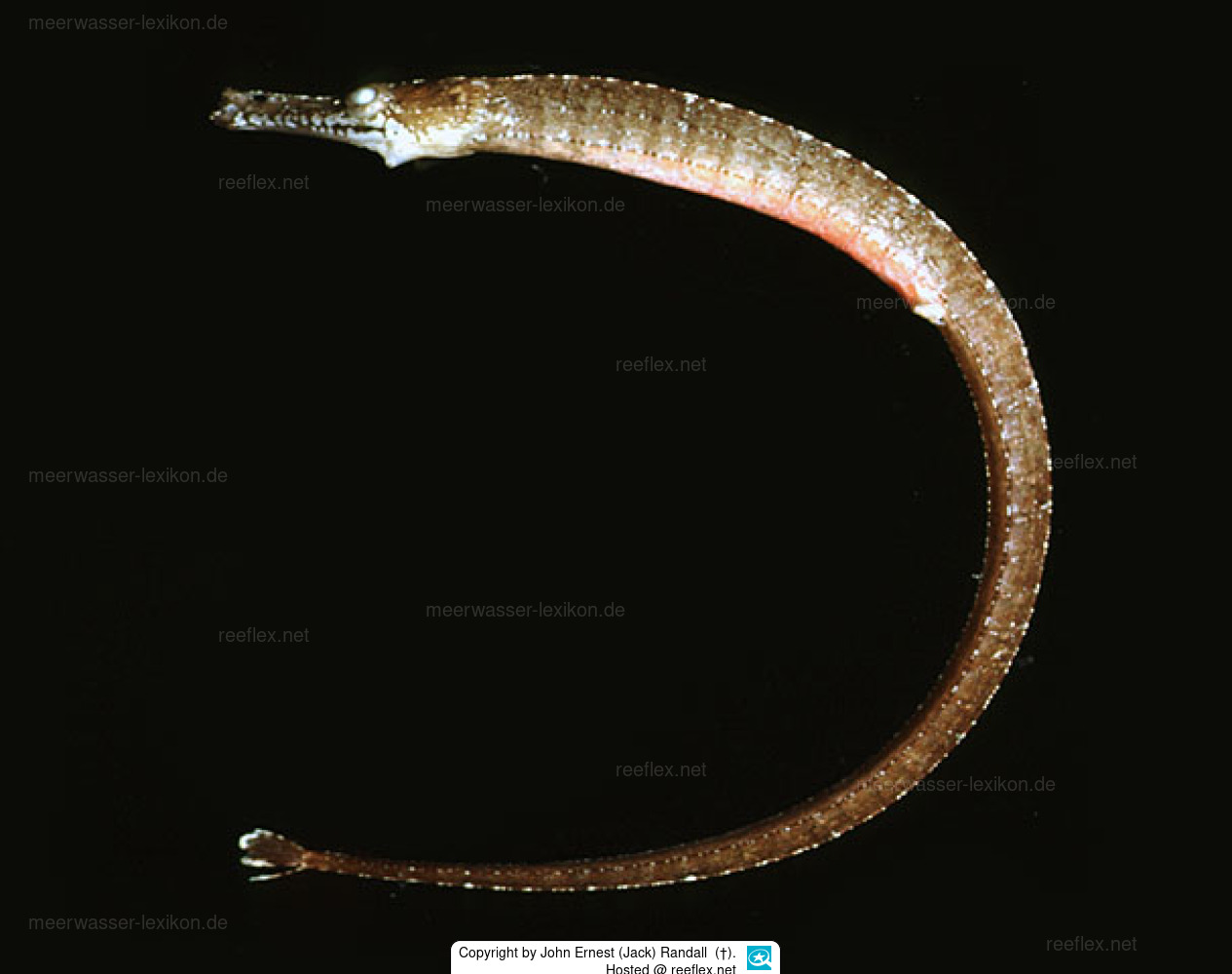Info
(Bleeker, 1854)
This photo has been taken by Heinz Mahler in Bali.
Adults pipefishs occur in estuaries, lower reaches of coastal rivers, streams and mangroves.
The male pipefish carries the eggs in a brood pouch which is found under the tail.
Synonyms:
Doryichthys spaniaspis Jordan & Seale, 1907
Hippichthys cyanospilus (Bleeker, 1854) (misspelling)
Hippicthys cyanospilus (Bleeker, 1854) (misspelling)
Parasyngnathus wardi Whitley, 1948
Syngnathus cyanospilos Bleeker, 1854
Syngnathus cyanospilus Bleeker, 1854 (misspelling)
Syngnathus kuhlii Kaup, 1856
Syngnathus mossambicus Peters, 1855
Syngnathus wardi (Whitley, 1948)
Feeding intake.
The fish take a long time to eat at the beginning, before the food is taken up, a close inspection is carried out. After acclimatisation, the offered frozen food is eaten without problems. It should be noted that wild-caught fish behave differently than offspring when it comes to food intake. In the case of offspring, the size of the fish purchased also plays a role in the choice of food.
This photo has been taken by Heinz Mahler in Bali.
Adults pipefishs occur in estuaries, lower reaches of coastal rivers, streams and mangroves.
The male pipefish carries the eggs in a brood pouch which is found under the tail.
Synonyms:
Doryichthys spaniaspis Jordan & Seale, 1907
Hippichthys cyanospilus (Bleeker, 1854) (misspelling)
Hippicthys cyanospilus (Bleeker, 1854) (misspelling)
Parasyngnathus wardi Whitley, 1948
Syngnathus cyanospilos Bleeker, 1854
Syngnathus cyanospilus Bleeker, 1854 (misspelling)
Syngnathus kuhlii Kaup, 1856
Syngnathus mossambicus Peters, 1855
Syngnathus wardi (Whitley, 1948)
Feeding intake.
The fish take a long time to eat at the beginning, before the food is taken up, a close inspection is carried out. After acclimatisation, the offered frozen food is eaten without problems. It should be noted that wild-caught fish behave differently than offspring when it comes to food intake. In the case of offspring, the size of the fish purchased also plays a role in the choice of food.







 Dr. John Ernest (Jack) Randall (†), Hawaii
Dr. John Ernest (Jack) Randall (†), Hawaii




